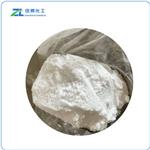As an an amylolytic exoenzyme, Pullulanase is one of the most essential endo-type enzyme that degrades pullulan. It is found in plants and microorganisms, in which it is synthesized as an extracellular, cell surface-anchored lipoprotein by the Gram-negative bacterium such as Bacillus brevis, genus Klebsiella. Type I pullulanases specifically cleaves α-1,6-glucosidic linkages in polysaccharides, such as starch, amylopectin, glycogen, dextrin, pullulan and related oligosaccharides, whilst type II pullulanases are effective to attack α-1,6-glucosidic linkages. This enzyme is applied on a large scale in glucose and maltose syrup industries, where it is combined with the activities of other enzymes, such as β-amylase and isoamylase to manufacture maltose and oligosaccharides. Besides, it commercially serves as an industrial enzyme preparation in various reactions, such as the production of branched cyclodextrins, where pullulanase can catalyze the condensation reaction. Pullulanase is also applied as a processing aid in grain processing biotechnology for the production of ethanol and sweeteners.
Type I pullulanases specifically hydrolyse α-1,6 linkages, while type II pullulanases are also able to hydrolyse α-1,4 linkages.


